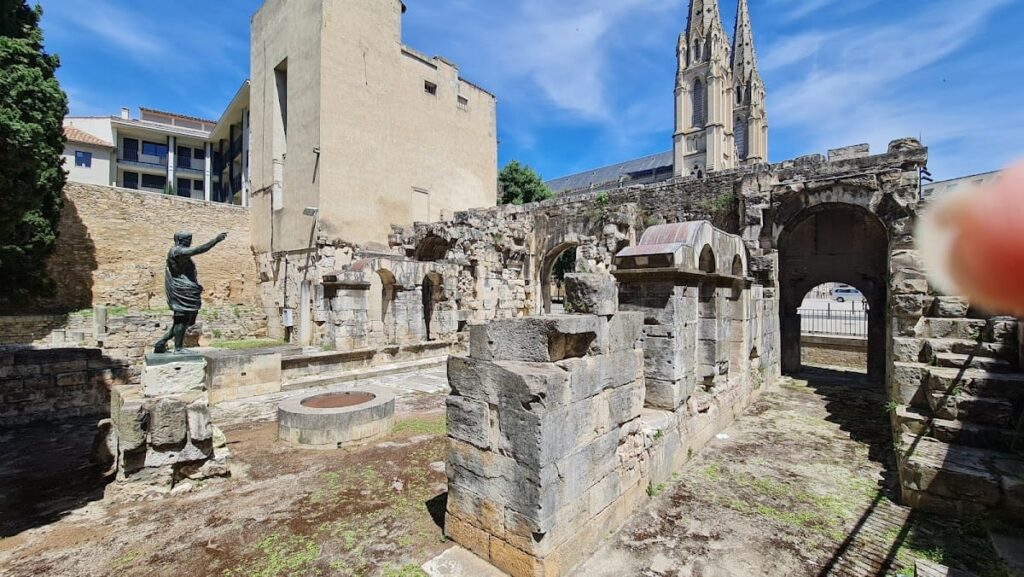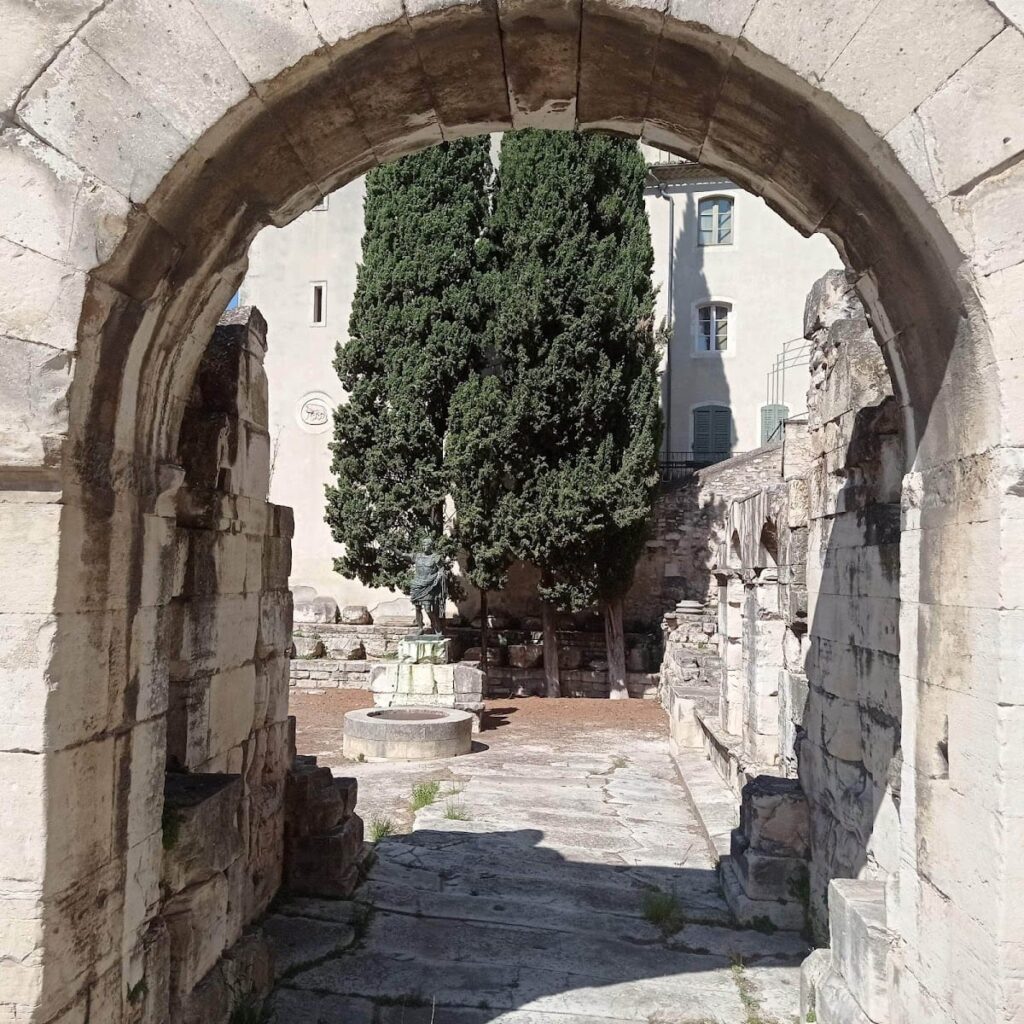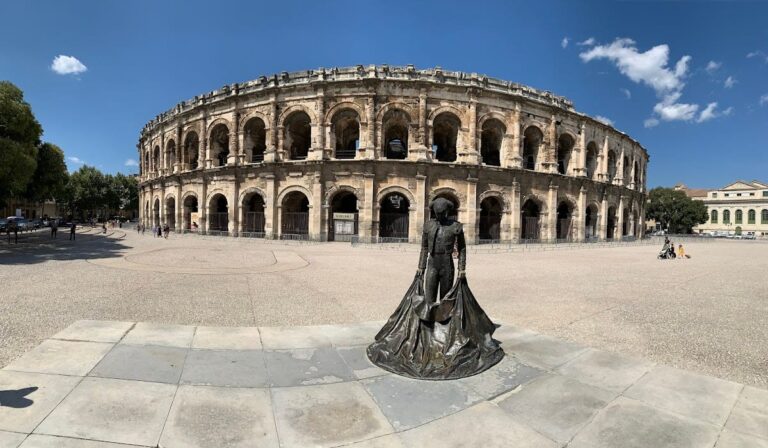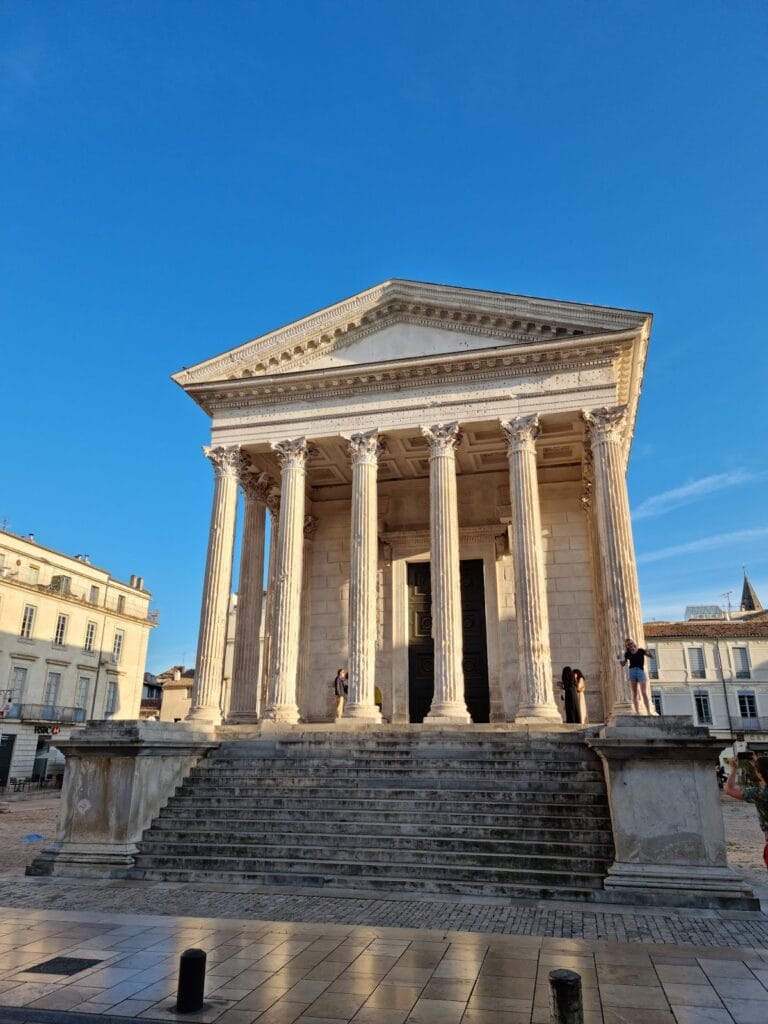Porte d’Auguste, Nîmes: A Roman City Gate in Southern France
Visitor Information
Google Rating: 4.4
Popularity: Medium
Google Maps: View on Google Maps
Official Website: www.nimes.fr
Country: France
Civilization: Roman
Remains: Military
History
The Porte d’Auguste is located in Nîmes, a city in the Occitanie region of southern France. In ancient times, Nîmes was known as Nemausus and was part of the Roman province of Gallia Narbonensis. The gate was built by the Romans in the 1st century BCE.
Constructed around 16 BCE, the gate marked the starting point of the Via Domitia, a major Roman road connecting Italy to Spain. An inscription on the gate credits Emperor Augustus with providing the city walls and gates, dating the structure to his 11th consulship and 8th tribunician power.
In the late medieval period, specifically in 1389, King Charles VI of France ordered the construction of a fortress on the site. This was intended to control conflicts between local nobles and the townspeople. The medieval fortress incorporated the ancient Roman gate into its defenses, which led to the gate being hidden from view for several centuries.
Around 1790, the fortress was demolished, uncovering the Roman gate once again. Since then, the Porte d’Auguste has been recognized for its historical value. It was officially protected as a historic monument in 1840. In the mid-19th century, the gate was documented through early photography by Édouard Baldus, helping preserve its image for future study.
Remains
The Porte d’Auguste consists of a Roman city gate featuring four semicircular arches. Two large central arches were designed to allow vehicles to pass through, while two smaller arches on the sides served pedestrians. This layout reflects its function as a main entrance to the city.
The gate was originally flanked by two semicircular towers, which no longer stand. Their former positions are marked on the pavement today by circles made of large flat stones, indicating the gate’s original defensive design. The structure was built using finely cut stones from the Barutel quarries, known for their quality.
Above the arches, a partially preserved inscription remains visible. This inscription credits Emperor Augustus with providing the gates and walls to the colony, confirming the gate’s Roman origin and construction date. The surviving remains are located in the eastern part of Nîmes’s historic center, known as the Écusson district.










